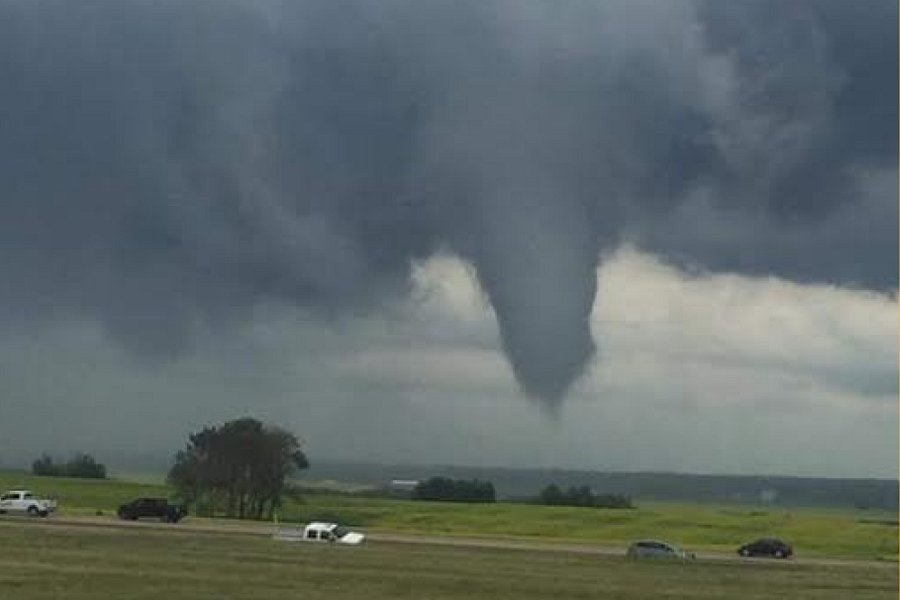Funnel clouds are fascinating meteorological phenomena that capture the attention of both storm enthusiasts and casual observers alike. These rotating columns of air can form under certain atmospheric conditions and are often associated with severe thunderstorms. In this article, we will delve into the intricacies of funnel clouds, their formation, characteristics, and the potential dangers they pose. By understanding these natural wonders, we can better appreciate the power of nature and stay safe during stormy weather.
The phenomenon of funnel clouds is not just a subject of scientific inquiry; it has implications for public safety and awareness. Understanding how funnel clouds form and the conditions that lead to their development can help individuals make informed decisions during severe weather events. Furthermore, funnel clouds are often precursors to tornadoes, making knowledge in this area critical for preparedness.
In this comprehensive guide, we will explore the various aspects of funnel clouds, from their definition to their formation process, and even their differences from tornadoes. We will also provide data and statistics to enrich your understanding and highlight the importance of staying informed about these atmospheric occurrences. So, let's dive into the world of funnel clouds!
Table of Contents
- What is a Funnel Cloud?
- How Do Funnel Clouds Form?
- Characteristics of Funnel Clouds
- Funnel Clouds vs. Tornadoes
- Safety Precautions During Funnel Clouds
- Funnel Cloud Observations and Reports
- Statistics and Data on Funnel Clouds
- Conclusion
What is a Funnel Cloud?
A funnel cloud is defined as a rotating, funnel-shaped cloud that extends from a cumulonimbus cloud to the ground but does not make contact with the surface. It is typically associated with severe weather conditions and can indicate the potential formation of a tornado. The key aspect that differentiates a funnel cloud from a tornado is that a funnel cloud does not reach the ground, while a tornado does.
How Do Funnel Clouds Form?
Funnel clouds form under specific atmospheric conditions. Here are the key factors that contribute to their development:
- Warm, Moist Air: Warm, moist air near the surface creates instability in the atmosphere.
- Wind Shear: A change in wind speed and direction with height helps create rotation.
- Thunderstorm Activity: The presence of a severe thunderstorm is often essential for funnel cloud formation.
When these conditions are present, the updrafts within a thunderstorm can lead to the development of a rotating column of air, which may form a funnel cloud.
Characteristics of Funnel Clouds
Funnel clouds possess several distinct characteristics that set them apart from other types of clouds:
- Shape: Funnel clouds have a tapered, funnel-like appearance that distinguishes them visually.
- Rotation: They exhibit rotation, which is a critical characteristic of their formation process.
- Color: Funnel clouds may appear gray or black due to the condensation of water vapor.
Funnel Clouds vs. Tornadoes
While both funnel clouds and tornadoes are associated with severe weather, it is crucial to understand their differences:
Contact with the Ground
The primary difference is that funnel clouds do not touch the ground, while tornadoes do. This distinction is essential for understanding the potential hazards involved.
Wind Speed
Tornadoes are typically more destructive than funnel clouds, as they can produce much higher wind speeds. While funnel clouds can indicate the potential for a tornado, they do not always lead to one.
Safety Precautions During Funnel Clouds
When funnel clouds are observed, it is vital to take safety precautions to protect yourself and others:
- Stay Informed: Monitor weather updates and alerts in your area.
- Seek Shelter: If a funnel cloud is spotted nearby, seek shelter in a sturdy building.
- Avoid Windows: Stay away from windows and exterior doors to avoid injury from flying debris.
Funnel Cloud Observations and Reports
Funnel clouds are often reported by storm spotters and meteorologists. Observations can help provide valuable data on the presence and behavior of these phenomena. Organizations such as the National Weather Service (NWS) rely on public reports to issue warnings and alerts regarding severe weather.
Statistics and Data on Funnel Clouds
According to the National Oceanic and Atmospheric Administration (NOAA), funnel clouds are relatively common during severe thunderstorms:
- Approximately 50% of severe thunderstorms produce at least one funnel cloud.
- Out of these, only about 10% lead to the formation of tornadoes.
Conclusion
In summary, funnel clouds are intriguing meteorological phenomena that serve as indicators of severe weather conditions. Understanding their formation, characteristics, and differences from tornadoes is essential for public safety and awareness. By staying informed and prepared, we can better navigate the complexities of severe weather.
We encourage you to share your thoughts and experiences regarding funnel clouds in the comments below. Additionally, feel free to share this article with others who may find it informative. For more insights on weather phenomena, explore our other articles!
Thank you for reading, and we hope to see you back on our site for more engaging content on the wonders of nature!
Unlocking The Secrets Of Jennifer Aniston's Oil: A Guide To Radiant Skin
Exploring Dave Itzkoff's Twitter Influence: A Deep Dive
Exploring Elizabeth Olsen: A Comprehensive Look Into Her Career And Life


